Click on an image for detailed information
Click on a column heading to sort in ascending or descending order

My
List |
Addition Date
|
Target
|
Mission
|
Instrument
|
Size
|

|
2005-07-04 |
Tempel 1
|
Deep Impact
|
Impactor Targeting Sensor (ITS)
|
494x494x1 |
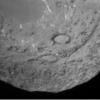
|
-
PIA02128:
-
So Close You Can Almost Touch It
Full Resolution:
TIFF
(244.5 kB)
JPEG
(21.56 kB)
|

|
2005-07-04 |
Tempel 1
|
Deep Impact
|
Impactor Targeting Sensor (ITS)
|
480x480x1 |
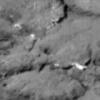
|
-
PIA02129:
-
Untouched Tempel
Full Resolution:
TIFF
(230.9 kB)
JPEG
(18.74 kB)
|

|
2005-07-04 |
Tempel 1
|
Deep Impact
|
Impactor Targeting Sensor (ITS)
|
1000x1016x1 |

|
-
PIA02131:
-
Moment of Impact
Full Resolution:
TIFF
(1.017 MB)
JPEG
(39.3 kB)
|

|
2005-07-04 |
Tempel 1
|
Deep Impact
|
Impactor Targeting Sensor (ITS)
|
616x458x1 |
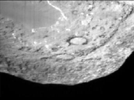
|
-
PIA02135:
-
One-Way Trip to Tempel

Full Resolution:
TIFF
(282.6 kB)
JPEG
(27.03 kB)
|

|
2005-07-06 |
Tempel 1
|
Deep Impact
|
Impactor Targeting Sensor (ITS)
|
247x241x1 |
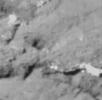
|
-
PIA02138:
-
Wipe Out
Full Resolution:
TIFF
(59.82 kB)
JPEG
(6.405 kB)
|

|
2014-11-07 |
Mars
|
MAVEN
|
Imaging Ultraviolet Spectrograph (IUVS)
|
2048x1101x3 |
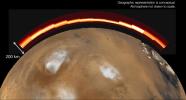
|
-
PIA18864:
-
Emission from Ionized Magnesium in Mars' Atmosphere After Comet Flyby
Full Resolution:
TIFF
(6.767 MB)
JPEG
(150.6 kB)
|

|
2014-10-23 |
Mars
|
MAVEN
|
Imaging Ultraviolet Spectrograph
|
6256x4479x3 |
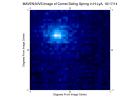
|
-
PIA18619:
-
MAVEN Ultraviolet Image of Comet Siding Spring's Hydrogen Coma
Full Resolution:
TIFF
(84.1 MB)
JPEG
(705.2 kB)
|

|
2004-06-12 |
Phoebe
|
Cassini-Huygens
|
ISS - Narrow Angle
|
1394x780x1 |
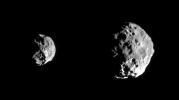
|
-
PIA06066:
-
Battered Moon
Full Resolution:
TIFF
(212.2 kB)
JPEG
(36.44 kB)
|

|
2004-06-23 |
Phoebe
|
Cassini-Huygens
|
ISS - Narrow Angle
|
2050x2900x1 |

|
-
PIA06073:
-
Phoebe Hi-Resolution Mosaic
Full Resolution:
TIFF
(3.661 MB)
JPEG
(511 kB)
|

|
2006-10-11 |
S Rings
|
Cassini-Huygens
|
ISS - Narrow Angle
|
1019x584x1 |
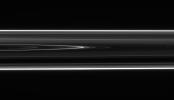
|
-
PIA08325:
-
A Twisted Tale
Full Resolution:
TIFF
(595.9 kB)
JPEG
(28 kB)
|

|
2009-09-21 |
S Rings
|
Cassini-Huygens
|
ISS - Narrow Angle
|
2496x2637x1 |

|
-
PIA11664:
-
Extensive Spiral Corrugations
Full Resolution:
TIFF
(6.589 MB)
JPEG
(309.1 kB)
|

|
2009-09-21 |
S Rings
|
Cassini-Huygens
|
ISS - Narrow Angle
|
1170x902x1 |
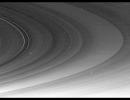
|
-
PIA11671:
-
Inner B Ring Terminus
Full Resolution:
TIFF
(1.057 MB)
JPEG
(99.44 kB)
|

|
2009-09-21 |
S Rings
|
Cassini-Huygens
|
ISS - Narrow Angle
|
13252x1066x1 |
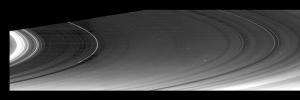
|
-
PIA11670:
-
Ring Scan Spilling Secrets
Full Resolution:
TIFF
(14.13 MB)
JPEG
(1.167 MB)
|

|
2010-03-01 |
Rhea
|
Cassini-Huygens
|
Imaging Science Subsystem
|
760x560x3 |
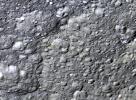
|
-
PIA12856:
-
Edge of Tirawa
Full Resolution:
TIFF
(1.279 MB)
JPEG
(117.3 kB)
|

|
2011-03-31 |
S Rings
|
Cassini-Huygens
|
Imaging Science Subsystem
|
828x470x1 |
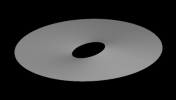
|
-
PIA12820:
-
Tilting Saturn's Rings

Full Resolution:
TIFF
(389.8 kB)
JPEG
(49.31 kB)
|

|
2019-06-13 |
Saturn
|
Cassini-Huygens
|
Imaging Science Subsystem
|
4168x1001x1 |

|
-
PIA23169:
Mini-jets in the F Ring
Full Resolution:
TIFF
(1.19 MB)
JPEG
(140.1 kB)
|

|
2005-07-04 |
Tempel 1
|
Hubble Space Telescope
|
Hubble Space Telescope
|
800x350x1 |
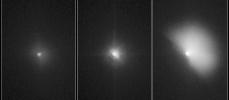
|
-
PIA02122:
-
Hubble Witnesses Comet Crash
Full Resolution:
TIFF
(280.5 kB)
JPEG
(22.82 kB)
|

|
2013-04-23 |
Jupiter
|
Hubble Space Telescope
|
Hubble Space Telescope
|
1536x2048x3 |

|
-
PIA17007:
-
Comet Shoemaker-Levy 9 Approaching Jupiter in 1994
Full Resolution:
TIFF
(9.441 MB)
JPEG
(79.26 kB)
|

|
2014-04-02 |
Helix Nebula
|
Hubble Space Telescope
|
Hubble Space Telescope
|
16000x16000x3 |
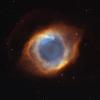
|
-
PIA18164:
-
Iridescent Glory of Nearby Helix Nebula
Full Resolution:
TIFF
(768.1 MB)
JPEG
(27.72 MB)
|

|
2010-11-04 |
Hartley 2
|
EPOXI
|
High Resolution Instrument (HRI)
Medium Resolution Instrument (MRI)
|
1274x535x1 |
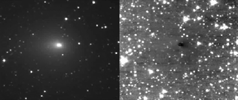
|
-
PIA13568:
-
Spacecraft Images Comet Target's Jets

Full Resolution:
TIFF
(682.5 kB)
JPEG
(57.09 kB)
|

|
2010-11-04 |
Hartley 2
|
EPOXI
|
High Resolution Instrument (HRI)
Medium Resolution Instrument (MRI)
|
680x548x3 |
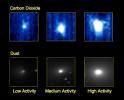
|
-
PIA13572:
-
Evidence for a First-of-Its-Kind Comet Jet
Full Resolution:
TIFF
(1.119 MB)
JPEG
(35.8 kB)
|

|
2005-07-04 |
Tempel 1
|
Deep Impact
|
High Resolution Instrument (HRI)
Infrared Spectrometer
|
275x232x3 |
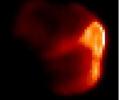
|
-
PIA02132:
-
Sunny Side of a Comet
Full Resolution:
TIFF
(191.8 kB)
JPEG
(4.867 kB)
|

|
2005-07-04 |
Tempel 1
|
Deep Impact
|
High Resolution Instrument (HRI)
|
516x402x1 |
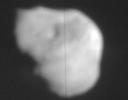
|
-
PIA02119:
-
Tempel 1 Nucleus
Full Resolution:
TIFF
(207.9 kB)
JPEG
(10.41 kB)
|

|
2005-07-04 |
Tempel 1
|
Deep Impact
|
High Resolution Instrument (HRI)
|
471x471x1 |
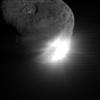
|
-
PIA02123:
-
Gone in a Flash
Full Resolution:
TIFF
(222.3 kB)
JPEG
(11.77 kB)
|

|
2005-07-04 |
Tempel 1
|
Deep Impact
|
High Resolution Instrument (HRI)
|
504x506x1 |
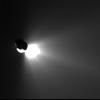
|
-
PIA02133:
-
Looking Back at a Job Well Done
Full Resolution:
TIFF
(255.5 kB)
JPEG
(7.689 kB)
|

|
2005-07-04 |
Tempel 1
|
Deep Impact
|
High Resolution Instrument (HRI)
|
720x540x1 |
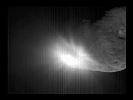
|
-
PIA02134:
-
Capturing the Flash

Full Resolution:
TIFF
(389.4 kB)
JPEG
(20.02 kB)
|

|
2005-07-05 |
Tempel 1
|
Deep Impact
|
High Resolution Instrument (HRI)
|
900x900x1 |
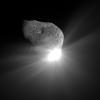
|
-
PIA02137:
-
Tempel Alive with Light
Full Resolution:
TIFF
(811 kB)
JPEG
(31.7 kB)
|

|
2005-07-08 |
Tempel 1
|
Deep Impact
|
High Resolution Instrument (HRI)
|
512x512x3 |
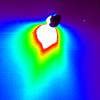
|
-
PIA02139:
-
Comet Tempel's Silhouette
Full Resolution:
TIFF
(264.2 kB)
JPEG
(37.36 kB)
|

|
2005-07-11 |
Tempel 1
|
Deep Impact
|
High Resolution Instrument (HRI)
|
314x234x1 |
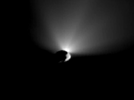
|
-
PIA02140:
-
Tempel Fades into Night

Full Resolution:
TIFF
(73.78 kB)
JPEG
(2.4 kB)
|

|
2005-07-20 |
Tempel 1
|
Deep Impact
|
High Resolution Instrument (HRI)
|
512x512x1 |
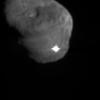
|
-
PIA02141:
-
First Contact
Full Resolution:
TIFF
(262.6 kB)
JPEG
(8.103 kB)
|

|
2010-11-04 |
Hartley 2
|
EPOXI
|
High Resolution Instrument (HRI)
|
640x327x3 |
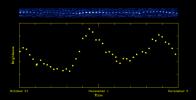
|
-
PIA13573:
-
Carbon Dioxide Fluctuations in Comet Hartley 2
Full Resolution:
TIFF
(628.7 kB)
JPEG
(18.46 kB)
|

|
2010-11-18 |
Hartley 2
|
EPOXI
|
High Resolution Instrument (HRI)
|
928x496x1 |
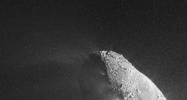
|
-
PIA13622:
-
Hartley 2, Close Up
Full Resolution:
TIFF
(461 kB)
JPEG
(36.85 kB)
|

|
2010-11-18 |
Hartley 2
|
EPOXI
|
High Resolution Instrument (HRI)
|
920x920x1 |
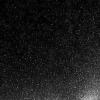
|
-
PIA13623:
-
Cometary Flurries
Full Resolution:
TIFF
(847.6 kB)
JPEG
(255.6 kB)
|

|
2010-11-18 |
Hartley 2
|
EPOXI
|
High Resolution Instrument (HRI)
|
529x400x1 |
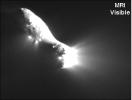
|
-
PIA13628:
-
The Many Faces of Hartley 2
Full Resolution:
TIFF
(212 kB)
JPEG
(12.67 kB)
|

|
2009-10-28 |
Mars
|
Mars Reconnaissance Orbiter (MRO)
|
HiRISE
|
1228x777x1 |
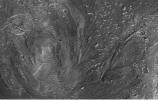
|
-
PIA12333:
-
Channels from Hale Crater
Full Resolution:
TIFF
(955.4 kB)
JPEG
(154.3 kB)
|

|
2013-10-30 |
Mars
|
Mars Reconnaissance Orbiter (MRO)
|
HiRISE
|
2880x1800x3 |
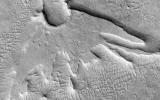
|
-
PIA17626:
-
Martian Thunderbird
Full Resolution:
TIFF
(5.191 MB)
JPEG
(1.13 MB)
|

|
2013-11-06 |
Mars
|
Mars Reconnaissance Orbiter (MRO)
|
HiRISE
|
2880x1800x3 |
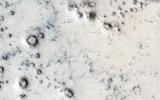
|
-
PIA17673:
-
Cratered Cones in Tartarus Montes
Full Resolution:
TIFF
(15.56 MB)
JPEG
(783.3 kB)
|

|
2014-10-20 |
Mars
|
Mars Reconnaissance Orbiter (MRO)
|
HiRISE
|
929x610x1 |
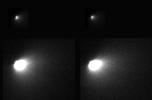
|
-
PIA18618:
-
First Resolved Image of a Long-Period Comet's Nucleus
Full Resolution:
TIFF
(567.5 kB)
JPEG
(26.9 kB)
|

|
2014-11-07 |
Mars
|
Mars Reconnaissance Orbiter (MRO)
|
HiRISE
|
973x779x3 |
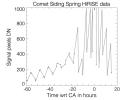
|
-
PIA18862:
-
Brightness Rhythm of Mars Flyby Comet Is Clue to Rotation Rate
Full Resolution:
TIFF
(759 kB)
JPEG
(58.15 kB)
|

|
2014-11-07 |
Mars
|
Mars Reconnaissance Orbiter (MRO)
|
HiRISE
|
1692x1128x1 |
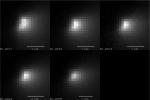
|
-
PIA18863:
-
Mars Orbiter Sizes Up Passing Comet
Full Resolution:
TIFF
(1.911 MB)
JPEG
(66.52 kB)
|

|
2014-11-07 |
Mars
|
Mars Reconnaissance Orbiter (MRO)
|
HiRISE
|
1267x719x3 |
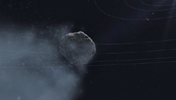
|
-
PIA19045:
-
Mars Orbiter Observes Comet Siding Spring (Animation)

Full Resolution:
TIFF
(2.734 MB)
JPEG
(36.37 kB)
|

|
2014-11-07 |
Mars
|
Mars Reconnaissance Orbiter (MRO)
|
HiRISE
|
700x482x3 |
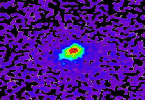
|
-
PIA19044:
-
Mars-Flyby Comet in False Color

Full Resolution:
TIFF
(1.013 MB)
JPEG
(77.35 kB)
|

|
2016-07-15 |
Mars
|
Mars Reconnaissance Orbiter (MRO)
|
HiRISE
|
2880x1800x1 |
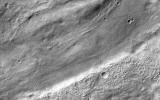
|
-
PIA20815:
-
A Meandering Channel on Hellas' Rim
Full Resolution:
TIFF
(5.191 MB)
JPEG
(1.547 MB)
|

|
2016-12-21 |
Mars
|
Mars Reconnaissance Orbiter (MRO)
|
HiRISE
|
2880x1800x3 |
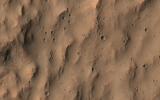
|
-
PIA14450:
-
Secondary Craters
Full Resolution:
TIFF
(13.96 MB)
JPEG
(384.2 kB)
|

|
2017-01-17 |
Mars
|
Mars Reconnaissance Orbiter (MRO)
|
HiRISE
|
4500x3000x3 |
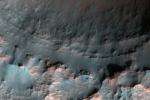
|
-
PIA12328:
-
Crater with Exposed Layers
Full Resolution:
TIFF
(40.16 MB)
JPEG
(2.299 MB)
|

|
2017-02-01 |
Mars
|
Mars Reconnaissance Orbiter (MRO)
|
HiRISE
|
4500x3000x3 |
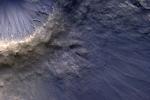
|
-
PIA11180:
-
Raining Rocks
Full Resolution:
TIFF
(40.52 MB)
JPEG
(2.174 MB)
|

|
2012-11-28 |
|
Herschel Space Observatory
|
Herschel Telescope
|
1000x699x3 |
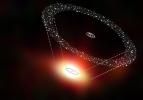
|
-
PIA16467:
-
A Vast Disk of Comets (Artist's Concept)
Full Resolution:
TIFF
(2.098 MB)
JPEG
(45.26 kB)
|

|
2005-01-18 |
Tempel 1
|
Deep Impact
|
Hale Telescope 200-inch
|
224x319x3 |

|
-
PIA07266:
-
Deep Impact on Its Way
Full Resolution:
TIFF
(214.8 kB)
JPEG
(36.38 kB)
|

|
2015-07-23 |
Asteroid
|
Goldstone Deep Space Network (DSN)
|
Goldstone Solar System Radar
NRAO Green Bank Telescope
|
593x717x1 |

|
-
PIA19644:
-
Radar Movie of Asteroid 2011 UW158

Full Resolution:
TIFF
(425.8 kB)
JPEG
(96.65 kB)
|

|
2011-11-07 |
Asteroid
|
Goldstone Deep Space Network (DSN)
|
Goldstone Solar System Radar
|
958x830x1 |
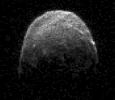
|
-
PIA15019:
-
Asteroid 2005 YU55 Approaches Close Earth Flyby
Full Resolution:
TIFF
(796.2 kB)
JPEG
(55.67 kB)
|

|
2012-05-23 |
Asteroid
|
Goldstone Deep Space Network (DSN)
|
Goldstone Solar System Radar
|
901x407x1 |
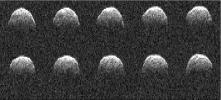
|
-
PIA15776:
-
Asteroid 1999 RQ36
Full Resolution:
TIFF
(367.3 kB)
JPEG
(90.74 kB)
|

|
2012-11-26 |
Asteroid
|
Goldstone Deep Space Network (DSN)
|
Goldstone Solar System Radar
|
2448x1080x1 |
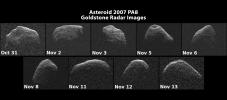
|
-
PIA16474:
-
Nine Radar Images of Asteroid PA8
Full Resolution:
TIFF
(2.647 MB)
JPEG
(271.5 kB)
|

|
2012-12-14 |
Asteroid
|
Goldstone Deep Space Network (DSN)
|
Goldstone Solar System Radar
|
876x708x1 |
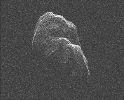
|
-
PIA16599:
-
Tumbling Asteroid Toutatis

Full Resolution:
TIFF
(621.1 kB)
JPEG
(124.8 kB)
|

|
2013-03-18 |
Asteroid
|
Goldstone Deep Space Network (DSN)
|
Goldstone Solar System Radar
|
715x450x1 |
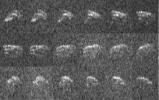
|
-
PIA16895:
-
Goldstone Radar Images of Asteroid 2013 ET
Full Resolution:
TIFF
(322.3 kB)
JPEG
(65.17 kB)
|

|
2014-06-12 |
Asteroid
|
Goldstone Deep Space Network (DSN)
|
Goldstone Solar System Radar
|
1280x570x1 |
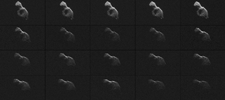
|
-
PIA18412:
-
Radar Images of Asteroid 2014 HQ124

Full Resolution:
TIFF
(730.6 kB)
JPEG
(93.79 kB)
|

|
2016-03-24 |
Comet
|
Goldstone Deep Space Network (DSN)
|
Goldstone Solar System Radar
|
960x500x1 |
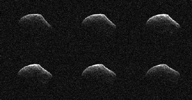
|
-
PIA20542:
-
Comet Frozen In Time by NASA Radar

Full Resolution:
TIFF
(452.2 kB)
JPEG
(109.6 kB)
|

|
2016-03-29 |
Comet
|
Goldstone Deep Space Network (DSN)
|
Goldstone Solar System Radar
|
900x750x1 |
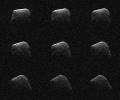
|
-
PIA19298:
-
Comet Scanned by NASA Radar
Full Resolution:
TIFF
(643.9 kB)
JPEG
(155.5 kB)
|

|
2011-01-26 |
Jupiter
|
|
Gemini North Telescope
|
1015x783x3 |
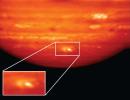
|
-
PIA13761:
-
Heat Map of Jupiter Impact
Full Resolution:
TIFF
(2.388 MB)
JPEG
(54.73 kB)
|

|
2013-06-28 |
|
Galaxy Evolution Explorer (GALEX)
|
GALEX Telescope
|
1500x1500x3 |
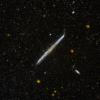
|
-
PIA17246:
-
Galaxy's Pencil-Thin Profile
Full Resolution:
TIFF
(6.753 MB)
JPEG
(377.7 kB)
|

|
2013-05-15 |
Mars
|
Mars Reconnaissance Orbiter (MRO)
|
CTX
HiRISE
|
1253x1822x3 |

|
-
PIA16928:
-
Fresh Cluster of Impact Craters on Mars
Full Resolution:
TIFF
(6.852 MB)
JPEG
(311.5 kB)
|

|
2008-06-24 |
Mars
|
Mars Reconnaissance Orbiter (MRO)
|
CRISM
|
1312x1795x3 |

|
-
PIA10947:
-
Oudemans Crater
Full Resolution:
TIFF
(7.073 MB)
JPEG
(217.1 kB)
|

|
2014-10-24 |
Mars
|
Mars Reconnaissance Orbiter (MRO)
|
CRISM
|
1010x500x3 |
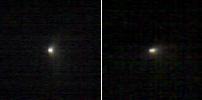
|
-
PIA15291:
-
Images From Mars-Orbiting Spectrometer Show Comet's Coma
Full Resolution:
TIFF
(1.516 MB)
JPEG
(38.03 kB)
|

|
2014-11-07 |
Mars
|
Mars Reconnaissance Orbiter (MRO)
|
CRISM
|
1878x794x3 |
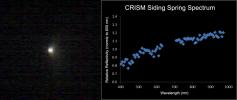
|
-
PIA18865:
-
Mars-Orbiting Spectrometer Shows Dusty Comet's Spectrum
Full Resolution:
TIFF
(4.475 MB)
JPEG
(94.77 kB)
|

|
2014-10-14 |
Comet
|
Rosetta
|
CIVA
|
1024x1024x1 |
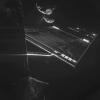
|
-
PIA18826:
-
Rosetta Selflessly Offers Beautiful Comet Selfie
Full Resolution:
TIFF
(1.05 MB)
JPEG
(73.85 kB)
|

|
2014-11-12 |
Comet
|
Rosetta
|
CIVA
|
1024x1024x1 |
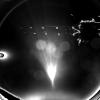
|
-
PIA18870:
-
Farewell Shot of Rosetta by Philae Lander
Full Resolution:
TIFF
(1.05 MB)
JPEG
(64.24 kB)
|

|
2014-11-12 |
Comet
|
Rosetta
|
CIVA
|
1024x1024x1 |
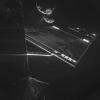
|
-
PIA18871:
-
Rosetta Mission Selfie at 10 Miles
Full Resolution:
TIFF
(1.05 MB)
JPEG
(73.84 kB)
|

|
2014-11-11 |
Comet
|
Rosetta
|
CIVA
|
1024x1024x1 |
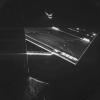
|
-
PIA18872:
-
Rosetta Mission Selfie at 30 Miles
Full Resolution:
TIFF
(1.05 MB)
JPEG
(82.29 kB)
|

|
2014-11-13 |
Comet
|
Rosetta
|
CIVA
|
2730x1596x1 |
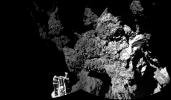
|
-
PIA18876:
-
Welcome to a Comet, from Lander on Surface
Full Resolution:
TIFF
(4.362 MB)
JPEG
(407.8 kB)
|

|
2014-11-13 |
Comet
|
Rosetta
|
CIVA
|
1451x1772x1 |

|
-
PIA18879:
-
First Panoramic View from Comet Lander
Full Resolution:
TIFF
(2.574 MB)
JPEG
(193.2 kB)
|

|
2014-12-17 |
Comet
|
Rosetta
|
CIVA
|
684x299x1 |
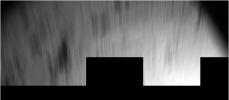
|
-
PIA19094:
-
Comet Lander's View During First Bounce
Full Resolution:
TIFF
(205 kB)
JPEG
(14.58 kB)
|

|
2014-12-17 |
Comet
|
Rosetta
|
CIVA
|
614x501x1 |
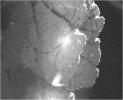
|
-
PIA19095:
-
Philae Lander's View of 'Perihelion Cliff' on Comet Surface
Full Resolution:
TIFF
(308.1 kB)
JPEG
(56.8 kB)
|

|
2014-12-17 |
Comet
|
Rosetta
|
CIVA
|
960x720x3 |
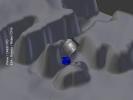
|
-
PIA19097:
-
Philae Lander's Setting on Comet, with Cliff-Image Inset
Full Resolution:
TIFF
(2.075 MB)
JPEG
(38 kB)
|

|
2005-07-04 |
Tempel 1
|
Deep Impact
|
Chandra X-ray Telescope
|
458x425x3 |
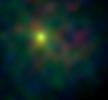
|
-
PIA02118:
-
X-ray Eyes on Tempel
Full Resolution:
TIFF
(584.9 kB)
JPEG
(7.752 kB)
|

|
2019-09-12 |
|
|
Canada-France-Hawaii Telescope
|
705x645x1 |
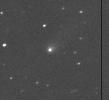
|
-
PIA23462:
-
Comet C/2019 Q4
Full Resolution:
TIFF
(455.4 kB)
JPEG
(131.8 kB)
|

|
2002-09-13 |
Earth
|
Shuttle Radar Topography Mission (SRTM)
|
C-Band Interferometric Radar
|
3601x3601x3 |
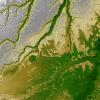
|
-
PIA03359:
-
Shaded Relief with Height as Color, Iturralde Structure, Bolivia
Full Resolution:
TIFF
(38.9 MB)
JPEG
(3.517 MB)
|

|
2002-09-26 |
Earth
|
Shuttle Radar Topography Mission (SRTM)
|
C-Band Interferometric Radar
|
1200x1200x3 |
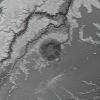
|
-
PIA03362:
-
Anaglyph: Shaded Relief and Height as Brightness, Iturralde Structure, Bolivia
Full Resolution:
TIFF
(3.729 MB)
JPEG
(366.1 kB)
|

|
2002-09-26 |
Earth
|
Shuttle Radar Topography Mission (SRTM)
|
C-Band Interferometric Radar
|
1016x865x3 |
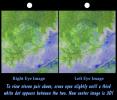
|
-
PIA03363:
-
Stereo Pair with ASTER Image, Iturralde Structure, Bolivia
Full Resolution:
TIFF
(2.168 MB)
JPEG
(186.8 kB)
|

|
2005-07-05 |
Tempel 1
|
Deep Impact
|
Autonomous Navigation System
|
720x540x3 |
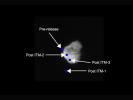
|
-
PIA02136:
-
A Cyber-Astronaut's Final Moves
Full Resolution:
TIFF
(1.168 MB)
JPEG
(15.58 kB)
|

|
2015-10-30 |
Asteroid
|
|
Arecibo Observatory
|
1050x149x1 |

|
-
PIA20040:
First Radar Images of Halloween Asteroid
Full Resolution:
TIFF
(87.11 kB)
JPEG
(12.76 kB)
|

|
2015-10-30 |
Asteroid
|
|
Arecibo Observatory
|
1041x1041x1 |
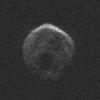
|
-
PIA20041:
-
Halloween Asteroid Rotation
Full Resolution:
TIFF
(721.8 kB)
JPEG
(70.81 kB)
|

|
2002-09-17 |
Earth
|
Terra
|
ASTER
|
1192x998x3 |
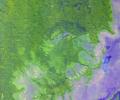
|
-
PIA03859:
-
Iturralde Crater, Bolivia
Full Resolution:
TIFF
(3.573 MB)
JPEG
(482.4 kB)
|

|
2009-01-07 |
Comet
|
Hubble Space Telescope
|
Advanced Camera for Surveys
|
846x916x3 |

|
-
PIA11749:
-
Stellar Interlopers Caught Speeding Through Space
Full Resolution:
TIFF
(2.327 MB)
JPEG
(146.1 kB)
|

|
1998-06-08 |
Mars
|
Viking
|
|
8292x6485x3 |
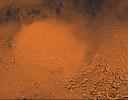
|
-
PIA00416:
-
Hellas Planitia
Full Resolution:
TIFF
(104.5 MB)
JPEG
(6.709 MB)
|

|
1996-11-27 |
Toutatis
|
|
|
4096x3072x3 |
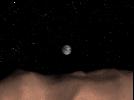
|
-
PIA00515:
-
Computer Generated View of Earth as seen from the Asteroid Toutatis
Full Resolution:
TIFF
(4.795 MB)
JPEG
(307.3 kB)
|

|
1999-01-27 |
Earth
|
Spaceborne Imaging Radar-C/X-Band Synthetic Aperture Radar
|
|
376x828x3 |

|
-
PIA01723:
-
Space Radar Image of the Yucatan Impact Crater Site
Full Resolution:
TIFF
(727.4 kB)
JPEG
(179.2 kB)
|

|
1999-04-15 |
Earth
|
Spaceborne Imaging Radar-C/X-Band Synthetic Aperture Radar
|
|
2447x1789x3 |
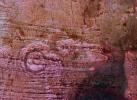
|
-
PIA01831:
-
Space Radar Image of Possible String of Impact Creaters
Full Resolution:
TIFF
(16.99 MB)
JPEG
(1.246 MB)
|

|
1999-04-15 |
Earth
|
Spaceborne Imaging Radar-C/X-Band Synthetic Aperture Radar
|
|
2206x1758x3 |
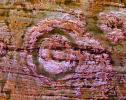
|
-
PIA01833:
-
Space Radar of Image Aorounga Impact Crater, Chad
Full Resolution:
TIFF
(14.7 MB)
JPEG
(1.28 MB)
|

|
2003-12-12 |
Sol (our sun)
|
Voyager
|
|
576x389x3 |
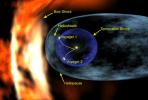
|
-
PIA04927:
-
Voyager Approaches Final Frontier (Artist's Concept)
Full Resolution:
TIFF
(598.8 kB)
JPEG
(25.05 kB)
|

|
2005-01-21 |
|
Deep Impact
|
|
1920x2560x3 |

|
-
PIA07292:
-
Deep Impact on Launch Pad
Full Resolution:
TIFF
(11.04 MB)
JPEG
(298.1 kB)
|

|
2004-12-09 |
|
Spitzer Space Telescope
|
|
1386x956x3 |
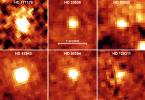
|
-
PIA07098:
-
Is There Anybody Home?
Full Resolution:
TIFF
(1.3 MB)
JPEG
(126 kB)
|

|
2004-12-09 |
|
Spitzer Space Telescope
|
|
1364x1024x3 |
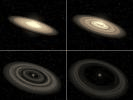
|
-
PIA07099:
-
The Evolution of a Planet-Forming Disk (Artist's Concept Animation)

Full Resolution:
TIFF
(4.195 MB)
JPEG
(75.87 kB)
|

|
2005-05-09 |
Tempel 1
|
Deep Impact
|
|
8598x5732x3 |
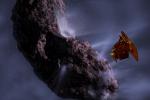
|
-
PIA07923:
-
Artist's Concept of Deep Impact's Encounter with Comet Tempel 1
Full Resolution:
TIFF
(147.9 MB)
JPEG
(3.652 MB)
|

|
2005-06-02 |
Tempel 1
|
Deep Impact
|
|
2696x1921x3 |
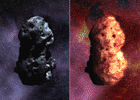
|
-
PIA03516:
-
Space Eyes See Comet Tempel 1 (Artist's Concept)

Full Resolution:
TIFF
(15.55 MB)
JPEG
(445.7 kB)
|

|
2005-07-01 |
Comet
|
|
|
720x573x3 |
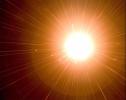
|
-
PIA02108:
-
It Happens in a Flash
Full Resolution:
TIFF
(1.239 MB)
JPEG
(46.81 kB)
|

|
2005-07-01 |
Comet
|
Spitzer Space Telescope
|
|
646x486x3 |
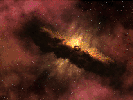
|
-
PIA02107:
-
Genesis of a Comet (Artist's Concept)

Full Resolution:
TIFF
(943.1 kB)
JPEG
(30.67 kB)
|

|
2005-07-01 |
Tempel 1
|
Deep Impact
|
|
720x540x3 |
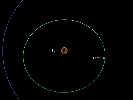
|
-
PIA02106:
-
The Road to Tempel (Artist's Concept)

Full Resolution:
TIFF
(1.168 MB)
JPEG
(15.33 kB)
|

|
2005-08-29 |
S Rings
|
Cassini-Huygens
|
|
2672x970x3 |
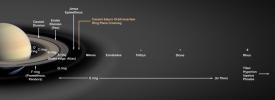
|
-
PIA03550:
-
Saturn's Rings (Artist's Concept)
Full Resolution:
TIFF
(7.784 MB)
JPEG
(125.3 kB)
|

|
2005-10-20 |
|
Spitzer Space Telescope
|
|
3000x2400x3 |
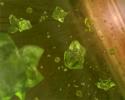
|
-
PIA03048:
-
Sowing the Seeds of Planets? (Artist's Concept)
Full Resolution:
TIFF
(21.6 MB)
JPEG
(301.7 kB)
|

|
2005-11-03 |
|
Stardust
|
|
1280x720x3 |
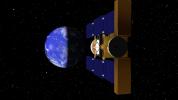
|
-
PIA03181:
-
Stardust Returns to Earth (Artist's Concept)
Full Resolution:
TIFF
(2.768 MB)
JPEG
(67.08 kB)
|

|
2005-11-03 |
|
Stardust
|
|
640x354x3 |
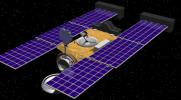
|
-
PIA03182:
-
Stardust Spacecraft (Artist's Concept)
Full Resolution:
TIFF
(680.6 kB)
JPEG
(32.26 kB)
|